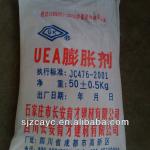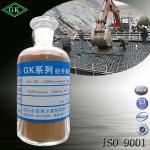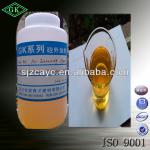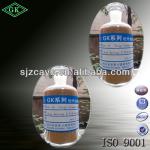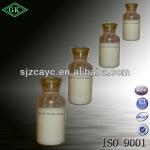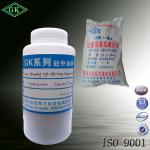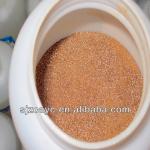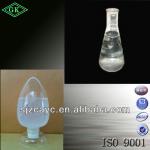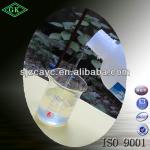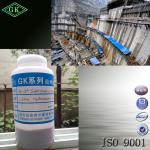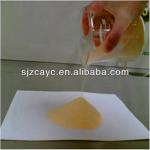microsilica/silica fume for cement/concrete - DSF-96
| Place of Origin: Fujian China (Mainland) | Brand Name: YULIN | Model Number: DSF-96 | COLOR: GREY WHITE |
| SiO2: 85%-98% | LOI: 2%MAX | Fe2O3: Max. 0.4% | Al2O3: 0.20 |
| CaO: 0.31 | K2O+ Na2O: 0.24 | Moisture: 2.55 | L.O.I: 3.10 |
| Bulk Density (kg/m³): 500-700 |
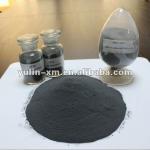
Silica fume
Analysis | Result | Result | Result | Result | Result |
| SF85 | SF88 | SF90 | SF92 | SF94 | |
| SiO2(%)(min.) | 85.05 | 88.05 | 90.05 | 92.05 | 94.05 |
| Fe2O3(%) | 0.78 | 0.44 | 0.21 | 0.25 | 0.20 |
| Al2O3(%) | 0.29 | 0.20 | 0.21 | 0.25 | 0.20 |
| CaO(%) | 0.39 | 0.31 | 0.31 | 0.36 | 0.21 |
| K2O+ Na2O (%) | 0.29 | 0.24 | 0.22 | 0.20 | 0.20 |
| Moisture(%) | 3.05 | 2.55 | 2.05 | 2.05 | 1.03 |
| Loss on Ignition (L.O.I) @975OC(%) | 3.38 | 3.10 | 2.38 | 1.75 | 1.50 |
| Bulk Density (kg/m³) | 500-700 | 500-700 | 500-700 | 500-700 | 500-700 |
The first national standard for use of Silica Fume ("microsilica") in concrete was adopted by AASHTO in 1990 (AASHTO Designation M 307-90). The AASHTO and ASTM C 1240 covers microsilica for use as a mineral admixture in PCC and mortar to fill small voids and in cases in which pozzolanic action is desired. It provides the chemical and physical requirements, specific acceptance tests, and packaging and package marking.
Mix Design
Silica Fume has been used as an addition to concrete up to 15 percent by weight of cement, although the normal proportion is 7 to 10 percent. With an addition of 15 percent, the potential exists for very strong, brittle concrete. It increases the water demand in a concrete mix; however, dosage rates of less than 5 percent will not typically require a water reducer. High replacement rates will require the use of a high range water reducer.
1.Effects on Air Entrainment and Air-void System of Fresh Concrete.The dosage of air-entraining agent needed to maintain the required air content when using Silica Fume is slightly higher than that for conventional concrete because of high surface area and the presence of carbon. This dosage is increased with increasing amounts of Silica Fume content in concrete (Admixtures and ground slag 1990; Carette and Malhotra 1983).
2.Effects on Water Requirements of Fresh Concrete.Silica Fume added to concrete by itself increases water demands, often requiring one additional pound of water for every pound of added Silica Fume. This problem can be easily compensated for by using HRWR (Admixtures and ground slag 1990).
3.Effects on Consistency and Bleeding of Fresh Concrete.Concrete incorporating more than 10% Silica Fume becomes sticky; in order to enhance workability, the initial slump should be increased. It has been found that Silica Fume reduces bleeding because of its effect on rheologic properties (Luther 1989).
4.Effects on Strength of Hardened Concrete.Silica Fume has been successfully used to produce very high-strength, low-permeability, and chemically resistant concrete (Wolseifer 1984). Addition of Silica Fume by itself, with other factors being constant, increases the concrete strength.
Incorporation of Silica Fume into a mixture with HRWR also enables the use of a lower water-to-cementitious-materials ratio than may have been possible otherwise (Luther 1990). The modulus of rupture of Silica Fume concrete is usually either about the same as or somewhat higher than that of conventional concrete at the same level of compressive strength (Carette and Malhotra 1983; Luther and Hansen 1989).
Effects on Freeze-thaw Durability of Hardened Concrete.Air-void stability of concrete incorporating Silica Fume was studied by Pigeon, Aitcin, and LaPlante (1987) and Pigeon and Plante (1989). Their test results indicated that the use of Silica Fume has no significant influence on the production and stability of the air-void system. Freeze-thaw testing (ASTM C 666) on Silica Fume concrete showed acceptable results; the average durability factor was greater than 99% (Luther and Hansen 1989; Ozyildirim 1986).
Effects on Permeability of Hardened Concrete.It has been shown by several researchers that addition of Silica Fume to concrete reduces its permeability (Admixtures and ground slag 1990; ACI Comm. 226 1987b). Rapid chloride permeability testing (AASHTO 277) conducted on Silica Fume concrete showed that addition of Silica Fume (8% Silica Fume) significantly reduces the chloride permeability. This reduction is primarily the result of the increased density of the matrix due to the presence of Silica Fume (Ozyildirim 1986; Plante and Bilodeau 1989).
Effects on ASR of Hardened Concrete.Silica Fume, like other pozzolans, can reduce ASR and prevent deletrious expansion due to ASR (Tenoutasse and Marion 1987).
| Packaging Detail:800~900kg jumbo PP bag with PE liner The Jumbo bag conforms to GB/T10454 and EN ISO 21898 with UV-proof function and anti-aging character. 25kg woven bags with PE liner; 25kg paper bags |
| Delivery Detail:within 15 days after payment |



